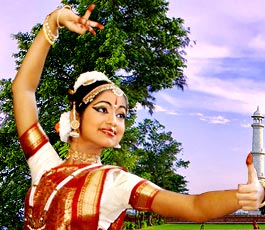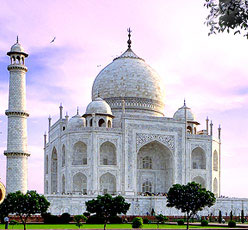
History of Yoga
Origins of Yoga have mesmerized researchers for a longtime and still one cannot say exactly about its birth. However now it is believed that Yoga began in India around 5000 years ago or so. In early 1920's during excavations being carried out in the Indus valley the archeologists discovered remains of one of the most ancient and advanced civilizations in the world. In these excavations soapstone seals that adorned with figurines that strongly resembled yogi-like figures in yoga like postures that had amazing resemblance with various asanas used in yoga today. This forced western scholars to change their opinion that Yoga originated around 500 B.C at the time of Gautama Buddha, who founded tranquil religion of Buddhism. Most of the details of yoga can be found in the Rig-Veda, which is believed to be the oldest text in all of the Indo-European languages. Most of the Yoga scriptures have been written in the Sanskrit language which is believed to be the root of most of the Indo-European languages like Greek, Latin, French, German, Spanish etc.
Types of Yoga
Today, various forms of Yoga are practiced, as with human evolution various new and old techniques of Yoga came into existence due to the influence of various religions and philosophies that originated in India. Some of the most popular forms of Yoga are mentioned below:
Hatha Yoga
This is one of the most popular forms of Yoga that is practiced throughout the world. It was introduced by Yogi Swatmarama, in the 15th century in India. This style forms the bases of many other styles of Yoga that focus on the physical well being of a person such styles include ower Yoga, Bikram Yoga, Ashtanga Yoga, and Kundalini Yoga. The Hatha Yoga is a combination of two Sanskrit terms "ha" meaning "sun" and "tha" meaning "moon". The Hath Yoga helps one create a balance between positive (sun) and negative (moon) currents present in human system. Yoga has eight limbs and Hatha Yoga focuses on Asanas(postures) and Pranayama (breathing techniques) to keep one physically fit.
Kundalini Yoga
This form of yoga is based on the fast movements through various yoga postures and breathing, chanting, and meditation techniques. This form of yoga has more spiritual feel in it than Hatha Yoga. This discipline emphasizes on creating awareness in one's self and surrounding environment by increasing sensory as well as intuitional consciousness. Kundalini is the name given to the source of energy also known as the Root chakra, which is believed to placed at the base of spine. Through this discipline one can unleash unlimited potential of human body and mind.
Raja Yoga
This form of yoga is also known as the Raja Yoga and its sole emphasis is that a person learns to control waves of his/her thoughts and channels them in a positive as well as constructive direction using meditation. The first mention of Raja Yoga can be found in the Sanskrit scriptures known as Yoga Sutras written by Patanjali an ancient Indian sage and belonged to the Samkhya tradition. Raja Yoga is one of the six traditional schools of Hindu philosophy. This form of yoga focuses on one's mind in order to attain the power of detachment from all and yet love everyone and everything, without losing one's self and inner peace.
Tanra Yoga
This branch of yoga focuses on harnessing the power of spiritual regeneration that lies dormant in most humans. In Tantra Yoga one has a chance to study and understand the universe in perspective of an individual. Astronomy, astrology, numerology, Ayurveda, geometry and mathematics are some of the interesting fields of science that are a part of Tantra Yoga. The basic essence of Tantra yoga is to decipher the path of righteousness also known as the Dharma. Through Tantra Yoga one can learn various methodologies to get rid of intolerance, ignorance and aggression.
Jnana Yoga
This discipline of yoga is based on the path of knowledge and is based on ancient Hindu philosophies. This form of yoga is bases on four principals that take human towards the attainment of salvation. The first principal is "Viveka" which means the power of discrimination that teaches one to differentiate between real (Brahman) and unreal (corporeal world). "Vairagya" is the virtue of detachment with everything temporary. The third principal is the attainment and inculcation of six virtues which includes control of mind and senses. Renouncing activities which are not of one's duty and increasing one's endurance levels. To develop faith and concentration, while looking towards liberation from temporal entanglements is the final principal of this discipline.
Karma Yoga
The term Karma Yoga translates into discipline of action in simple English. This form of yoga is based on one of the spiritual scripture of world and Hinduism the Bhagavad Gita. The Karma Yoga teaches one to achieve rightness in every action. One can trace the meaning of the term Karam to the Sanskrit word Kri which means 'to do', whereas yoga stands for union thus Karma yoga means union through action. However if one goes deep into the Vedantic philosophy, karma not just means actions but also thinking acting willingly or unwillingly. The Karma Yoga teaches one to do selfless good without expectation of anything in return.
Bhakti Yoga
This the easiest way for a common person to attain peace as well as tranquility in one's life as this form of yoga does not require wide-ranging yogic practices. Bhakti Yoga emphasizes on cultivation of true love, absolute faith and unconditional surrender to God. The major sources of the Bhakti Yoga philosophy are Bhagavad Gita, Bhagavata Purana and Puranas. This form of yoga is most suitable for those who have an emotional outlook as chanting and singing devotional songs in God's praise are a significant part of Bhakti Yoga. It encompasses genuine search of God and attainment of enlightenment.









